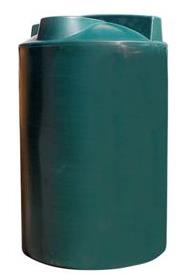Add Your Business
Green Systems
Green Systems
The size of tank you need depends on a number of factors including the roof area, water usage and physical constraints of your property. Obviously the larger the tank, the more effective it is in conserving water.
Capturing rainwater from your roof is a great way to supply water for a range of purposes including washing clothes, flushing toilets and watering your garden. Rainwater tanks can also help you save money on your water bill, especially if you also use other water saving devices such as dual flush toilets, water-efficient showerheads, trigger nozzles and tap timers.
Overflows or discharge pipes from roof mounted evaporative air conditioners or hot water systems should not be allowed to discharge onto the roof catchment area.
Choosing a rainwater tank. Tanks are available in a range of materials in different shapes and sizes. The most common material used is galvanised steel which is light and provides for easy transportation. Concrete and ferro-cement tanks are strong and long lasting and can be installed under the ground. Fibreglass tanks suitable for collecting rainwater are manufactured with a food-grade coating on their interior surface. There is also an increasing range of tanks manufactured from synthetic polymers including polyethylene. Plastic tanks should be constructed of materials that are at least food-grade standard.
When installed, your tank should be covered and every access point, except the inlet and overflow, should be sealed. If an access point is left uncovered, there's a risk of children, adults and animals drowning or contaminating the water. The inlet should incorporate a mesh cover and a strainer to keep out foreign matter and to stop mosquitoes and other insects getting into the tank. The overflow should be covered with an insect-proof screen.
Installation and maintenance. Your roof size will determine the volume of water you are able to harvest. You may need to make changes to the position of your downpipes or gutters to maximise the volume of water flowing to your tank.
Safety and water quality. Making sure water quality is good depends on correct design and installation, followed by sensible maintenance of your rainwater tank and catchment area.
Capturing rainwater from your roof is a great way to supply water for a range of purposes including washing clothes, flushing toilets and watering your garden. Rainwater tanks can also help you save money on your water bill, especially if you also use other water saving devices such as dual flush toilets, water-efficient showerheads, trigger nozzles and tap timers.
Overflows or discharge pipes from roof mounted evaporative air conditioners or hot water systems should not be allowed to discharge onto the roof catchment area.
Choosing a rainwater tank. Tanks are available in a range of materials in different shapes and sizes. The most common material used is galvanised steel which is light and provides for easy transportation. Concrete and ferro-cement tanks are strong and long lasting and can be installed under the ground. Fibreglass tanks suitable for collecting rainwater are manufactured with a food-grade coating on their interior surface. There is also an increasing range of tanks manufactured from synthetic polymers including polyethylene. Plastic tanks should be constructed of materials that are at least food-grade standard.
When installed, your tank should be covered and every access point, except the inlet and overflow, should be sealed. If an access point is left uncovered, there's a risk of children, adults and animals drowning or contaminating the water. The inlet should incorporate a mesh cover and a strainer to keep out foreign matter and to stop mosquitoes and other insects getting into the tank. The overflow should be covered with an insect-proof screen.
Installation and maintenance. Your roof size will determine the volume of water you are able to harvest. You may need to make changes to the position of your downpipes or gutters to maximise the volume of water flowing to your tank.
Safety and water quality. Making sure water quality is good depends on correct design and installation, followed by sensible maintenance of your rainwater tank and catchment area.





